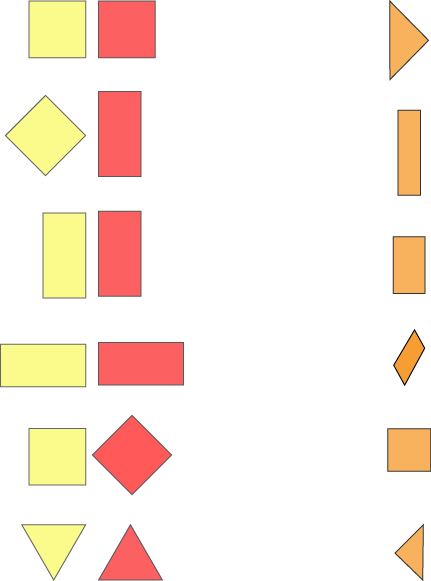Copyright © University of Cambridge. All rights reserved.
'Overlaps' printed from https://nrich.maths.org/
Show menu
Why do this problem?
The main aim of this problem is to encourage children to try to picture images in their heads and to show that the image may be a dynamic one. The context of overlaps is likely to be new to them, which will hopefully peak their curiosity and inspire them to explore. As they work, they will be applying knowledge of properties of shapes, and using language associated with 2D geometry.
Visualising is a skill which can be invaluable in solving problems, and this problem provides an unusual context for practising it.
Possible approach
Rather than showing the image of the equilateral triangle overlapping the square in the first part of this problem, you could just show the image of the two separate shapes. Ask children to shut their eyes and imagine the triangle moving over the square. This will give them time to really focus on their own image, rather than being presented with someone else's straight away. Invite them to talk to a partner about what they can see in their mind's eye - what shape is the overlap? - and then talk about it as a whole group.
At this point, you could then show the image on screen or use shapes cut out of differently coloured transparent plastic sheets, or plastic wallets/folders. You could then ask the class to work on the problem in pairs, perhaps using cut-out shapes to test their hypotheses. (When working in small groups or pairs, shapes cut from tissue paper could be useful.)
Key questions
Tell me about how you are working on the problem.
Looking at the overlap, does its shape give you clues about which shapes made it?
Possible extension
Learners could try this more complex version of this problem.
Possible support
Suggest cutting out the shapes from this sheet and drawing round them to make overlaps.



